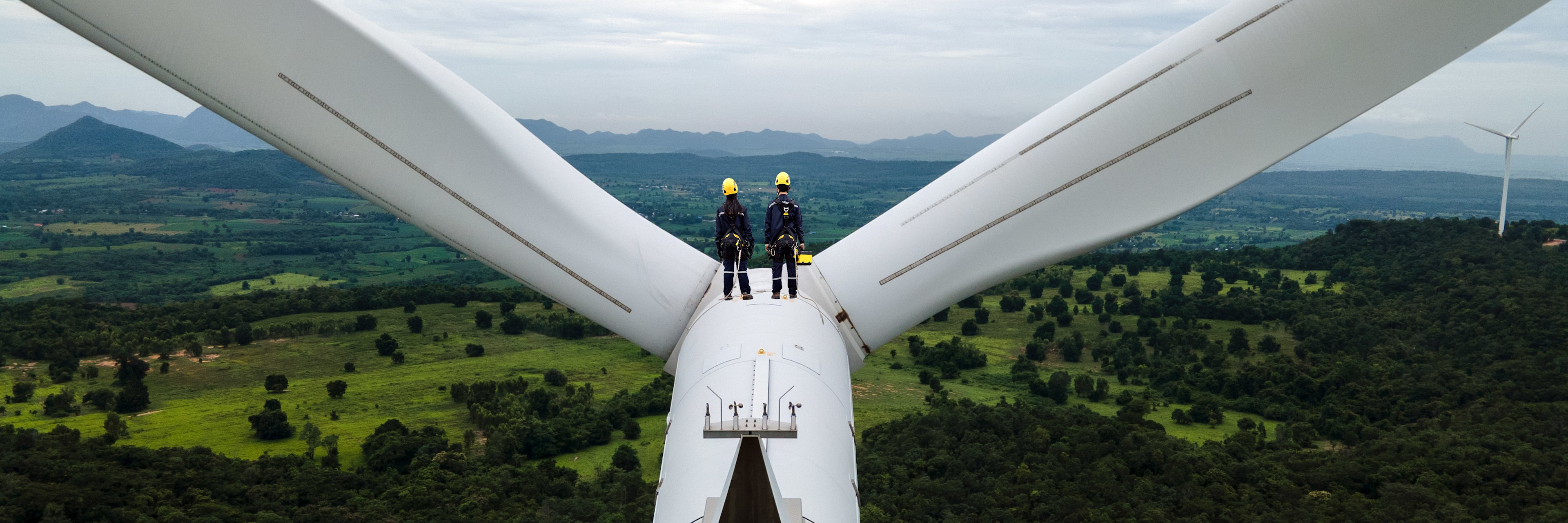Resource sustainability refers to the long-term availability of a raw material that is either renewable (it can naturally replenish itself) or non-renewable (it will eventually run out). It is an important metric for sustainable investors in understanding how quickly humans are using the Earth’s dwindling resources, how much can be replaced or recycled, and how long other materials have left before they are exhausted.
The planet’s current inability to sustain itself long term is not in question, since research shows that we use resources equal to 1.75 times the Earth’s regenerative capacity. This means many resources will run out at some point, particularly as emerging markets become richer and are able to afford more consumer goods. The challenge is getting larger as the world’s population continues to grow – it would currently take five Earths for everyone in the world to live at the same level of consumption as Americans.

Creating returns that benefit the world we live in
Non-renewable resources
Non-renewable resources are broadly anything that is mined. Some resources are more plentiful than others: the world has a virtually inexhaustible supply of aluminum, which makes up 8% of the Earth’s crust. Silicon, which is used to make microchips and glass and is found on any sandy beach, is also abundant. However, iron ore – once the most abundant metal on the planet – is set to run out within 65 years at current rates of extraction.
Geopolitical considerations compound access to ‘rare earth metals’ which are used in specialized manufacturing from medical devices to smartphones, since 90% of them are mined in China, which can turn off supplies at will. Precious metals such as gold, platinum and silver are likewise only found in certain countries, while reserves of copper are rapidly depleting. None can be replaced once mined, putting greater emphasis on recycling them once their original use has run its course.
Other problems are raised by replacing vehicle internal combustion engines with electric powertrains powered by batteries which rely on cadmium and lithium. Mining them in regions where the mineral is plentiful, such as in the Democratic Republic of the Congo and Argentina, is fraught with sustainability problems including labor abuse and environmental damage.
Renewable resources
Renewable resources are those which are generated by nature and can be replaced. Limiting global warming ironically presents a dilemma in replacing fossil fuels with renewable energy. While renewables are by definition an infinite resource, they will only power generators while the sun shines, the wind blows or the rain falls. Coal, oil and gas, conversely, will burn whatever the weather. And fossil fuels are plentiful: at current levels of extraction, the world has on average about 150 years of coal left, rising to 350 years of reserves in the US. This creates the problem of stranded assets should this coal be left in the ground because it cannot be burned to meet global warming targets.
Nuclear power presents another dilemma, as once the nuclear reactor is installed, the electricity it can generate is virtually infinite, and greenhouse gas emissions are virtually zero. The world also has about 80 years of uranium left, making it possible to build many more reactors. However, nuclear power can be dangerous, as seen in the 1986 explosion of the Chernobyl reactor in Ukraine which has left a vast area uninhabitable, and the more recent Fukushima nuclear plant disaster in Japan which was hit by an earthquake and tsunami in 2011.
The renewable raw material that is used on the biggest scale, and which can be infinite if harvested sensibly, is wood. In the 19th century, Swedish foresters calculated that a pine tree took 27 years to reach maturity and its utmost commercial value. They therefore realized that if you cut down 1/27 or less of your trees each year, and replanted the cut timber with saplings, then you had a permanently replenishing resource. Currently, humans cut down about 15 billion trees each year and replant 5 billion, leaving an annual deficit of 10 billion trees. Aside from the fact this means it is not renewable, this also has a major impact on global warming.
Food and water sustainability present different challenges, and are discussed in their own glossary entries.



















